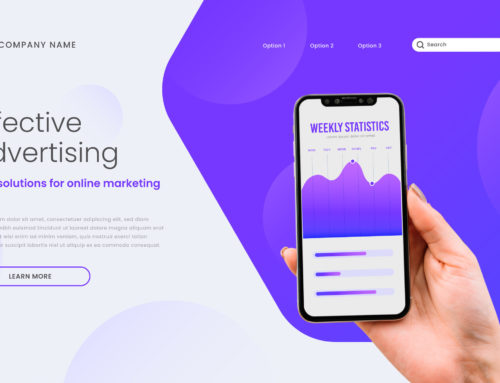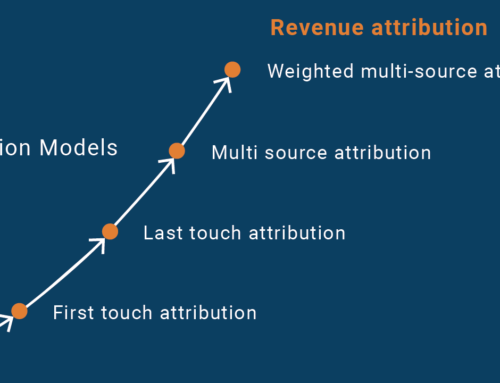One recent Neilsen study revealed that 92% of consumers trust referrals from family or friends more than any other type of advertising or referral. Word-of-mouth (WOM) marketing is often considered the marketing gold standard in lead generation and online marketing. For every lead or prospect you can work to attract through a savvy website or clever content, a happy customer can effortlessly send you numerous referrals that become profitable customers for life. Yet many entrepreneurs and small business owners believe that word-of-mouth marketing is something that occurs by accident or at least at the will of customers.
While satisfied customers can become raving fans and brand advocates organically, smart businesses use several approaches in their marketing and customer service to encourage this to happen deliberately. From loyalty programs to applying conversion optimization strategies, it’s possible to get your happy customers talking. If you’re struggling to find creative ways to get your fans to be more vocal on your behalf, here are five tips to help you get started.
Ask satisfied customers to send you referrals
Use clear calls to action to get your customers talking about your business. When is the last time you asked your clients or customers for a referral? It’s possible that you haven’t, because you don’t want to burden customers or feel awkward doing so. Yet companies do this in numerous ways every day. Here are some non-spammy ways to ask for referrals:
- Integrate these calls to action in your content, at the right point in the funnel: For example, at the bottom of your invoices and the other customer communications that follow a sale, consider adding a simple call to action such as “Did you love your experience with us? Tell a friend!”
- Implement a structured referral program: Consider implementing a structured loyalty program with incentives (more on incentives below). You can then communicate with your audience about the program, and motivated customers can self-select their participation.
- Initiate a full referral campaign: In some instances, it’s appropriate to email or otherwise reach out to your customers directly and ask for referrals. It’s up to you to decide whether this will work with your audience, and how best to approach it. If you’re asking for referrals, review your customer database to ensure you’re targeting only your most satisfied clients. This step will help reduce awkward interactions and increase your chances of success.
- Use market research to target and filter requests: If you’re conducting market research with customers, such as a survey, it’s possible to use that information to segment your audience. Subsequently, display specific calls to action or defer follow up communications to highly satisfied customers asking for referrals. There are software programs to help you do this, often with a specific industry focus.
Leverage your business’ specific type of WOM
Depending on your product or service, you fall into one of two categories. The first is the kind of business that can be referred anytime, such as a retail store or an interesting product. The second is the kind of business that’s referred to in times of need, such as when you hear a friend asking about a divorce attorney or horse trainer and a specific name springs to mind. If you’re in an evergreen business, it’s possible to use discounts, direct messaging, and regular follow ups to get people to refer you to their family and friends.
For the second type of business, such as in the divorce attorney situation, it’s important to be aware that out of the blue referrals can feel awkward, forced, and be ineffective. Instead, your approach here should be specific: create a repository of information that answers common questions, discusses your processes, and makes it easy to contact you. Ensure that all your satisfied customers know that this resource exists. Consider leveraging leave-behind marketing pieces and ongoing relationship building strategies to keep your brand front of mind. Make it easy for them to refer you when an opening naturally occurs. Don’t waste time creating systems and collateral that’s going after the wrong kind of referral.
Offer rewards to the customers and referred prospects
One of the tenets of good marketing is that incentives, scarcity, and exclusive content can all incentivize people to take action. See the following piece on Robert Cialdini’s model of influence to learn more. These same principles can be used to help increase word of mouth marketing for your business. In some cases, it’s easier to get people to take action on a referral if they genuinely feel that they’re creating value for the person they’re sending your way.
Can you offer a discount, special pricing, or free consultation to anyone who comes you to via a referral? Treating these leads as valued individuals serves two goals. It reinforces to your customer that you appreciate the business and it continues to build on the trust that the prospect is already feeling due to a personal referral. You should also consider what the value is to the customer. Do you have a specific discount, incentive, comped product, or mini-service that you can offer to say thank you? The goal – showing appreciation – is the same and is more likely to get them to take repeat action on sending you customers in the future.
Use social media as a referral channel
By its very nature, social media is the perfect channel for encouraging customers to discuss your business. One raving post could get their happy opinion in front of a person’s entire audience, including family, close friends, colleagues, and more extended networks of contacts. Make sure that your technical infrastructure makes it easy to share your content, easy to make referrals, and easy for you to track that over time.
Personalization is also really important in these situations. One study shows that 81% of social media users say that their purchases are impacted by friends’ social media posts. If a person clicks on something one of your customers has shared, do your best to ensure that they are taken to a personalized landing page that continues to build on those feelings of trust. Acknowledge that they are a referral, and consider using language that explicitly shows whatever incentives or promotions you’re offering to them because of that. Reduce any cognitive dissonance between a personal referral and the landing page to improve the user experience and increase conversions.
Track your WOM data
It’s important to track the influence of word-of-mouth marketing on your business. Before you invest heavily in developing this channel, take the time to learn whether it works for your company, your space, and for you. And if it’s attracting customers, are they the right kind of customers with a high average order value and a high lifetime customer value? If not, then your efforts could better be spent elsewhere.
If the customers coming to you via WOM are your most profitable customers or make up a meaningful part of your business, find out who is sending them your way. In some businesses, especially those where there is a strong passion component, referrals are a natural part of the community. Knowing that allows you to tap into that culture. In other cases, it’s a very small segment of your customer base that’s sending you leads and it’s time to ensure those customers are treated like gold. Don’t overlook the role of both tracking and testing in this space.
Developing the systems and promotions that support your company’s word-of-mouth marketing can yield huge dividends in both increasing sales and deepening relationships with customers. What referral mechanisms do you have in place that are working to help you develop WOM buzz and new sales? Let me know in the comments below.







